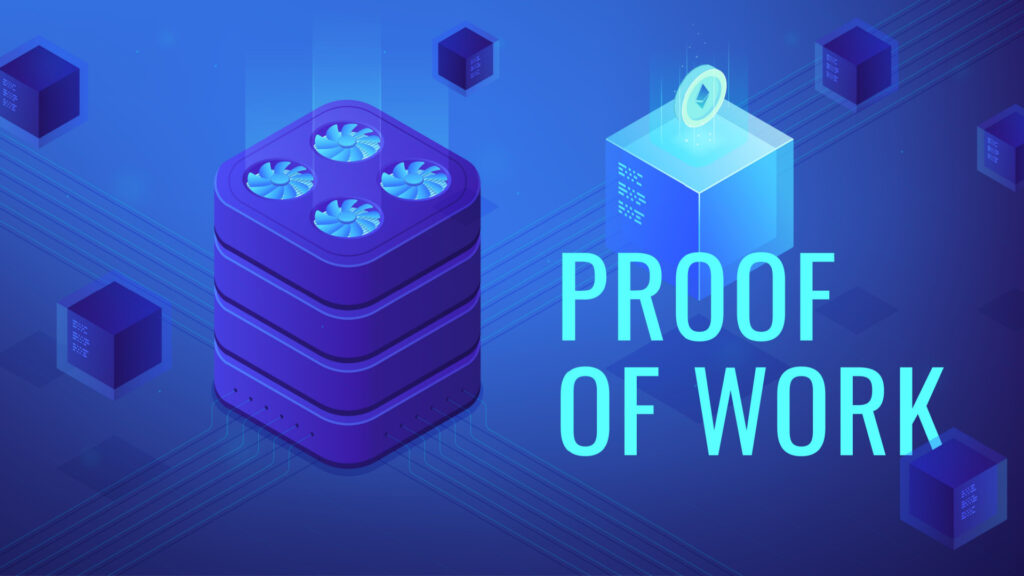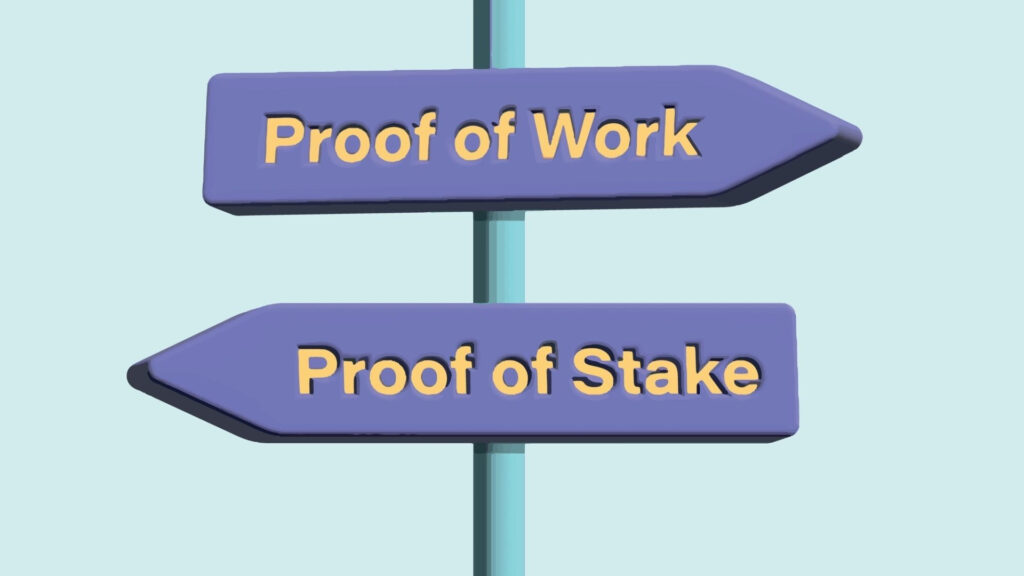What is Proof of Work in a blockchain?
Proof of Work is a decentralized consensus mechanism that various blockchains use to mine cryptocurrencies. It is based upon the network participants' efforts to solve a mathematical problem and validate transactions while simultaneously generating new coins.
Because it is a peer-to-peer transaction-processing method, Proof of Work ensures equal rights for all network participants, decentralizes data distribution, and offers maximum protection against fraud and hacker attacks. Furthermore, by using Proof of Work, participants can also eliminate using third-party services to carry out and verify transactions.
The history of the Proof of Work process
Although Proof of Work is intricately linked to Bitcoin and was popularized in 2008, when someone using the pseudonym Satoshi Nakamoto first published a Bitcoin white paper, the PoW algorithm is much older. In the world of computer developers, this concept has existed since the early 1990s. It started being actively used in 1999 when programmers Markus Jacobsson and Ari Ewels incorporated it in scientific articles.
A couple of years later, in 2004, Hal Finney adapted the PoW concept to secure digital investments and backed it up with the SHA-256 hashing algorithm. The emergence of Bitcoin, which adopted the mechanism primarily as a security tool (the more blocks miners add to a blockchain, the more stable it is), very rapidly made PoW the leading algorithm (Proof of Work dominant algorithm) in the market. Incidentally, Hal Finney was the first-ever recipient to complete a bitcoin transaction, so we can say that the first practical application of PoW took place under his supervision.
How does the Proof of Work method work?

In practice, Proof of Work means the following: miners demonstrate to the blockchain network that they have done the necessary work to create a transaction block and add it to the registry. From a miners' viewpoint, when they use their equipment's computing power, they convert energy into finding blocks and solving mathematical problems. They become an "engine" for the entire network and its activities. Miners receive new coins as a reward for doing this, earning cryptocurrency, and increasing their income.
In essence, PoW mining is a competition where miners try to be the first to solve a cryptographic puzzle that will enable them to add a new block to the blockchain, complete an action and then get a reward for it. The first miner to achieve this becomes the "winner" of the mathematical race. However, they will only receive a reward following the PoW protocol that verifies their correct and valid calculations.
Mining is a mammoth task involving countless numbers across computers and nodes connected to a network. Before the miner discovers the correct hash and solves the puzzle, a computer will make a thousand trial and error codes. Therefore, more hashes can be found when using a more powerful computer and a higher-performance graphics card, and the more cryptocurrency the miner will earn.
Proof of Work is a bit like a lottery. During the trial process, miners create candidate blocks and wait for one of them to meet the network conditions and move on. This procedure is often compared to diamond mining in a coal mine: to find as many gems as possible, you will need a super-innovative pickaxe, but even then, you will continue to come across a bunch of worthless stones along the way before you can dig up something of real value.
Likewise, the PoW system complicates or simplifies work algorithms. For example, suppose blocks are created too vigorously, and the network is near congestion. In that case, the algorithms and mining conditions become more complicated, taking miners longer. Although, of course, It can also work the other way around.
Proof of Work: advantages and disadvantages

The indisputable advantages of the Proof of Work system include the following:
- The highest level of security. Due to the regular creation of new blocks and the development of the network, neither DDoS nor even more serious hacker attacks can undermine the blockchain system and hack into the data. In many respects, Bitcoin has successfully existed for more than a decade due to this.
- A high income. Miners can secure a stable cryptocurrency passive income when using powerful equipment or as part of pooling (communities.)
- Decentralization. The PoW mechanism does not allow one or more players to govern - their influence and rights are always equal.
However, behind these advantages, there are also disadvantages that threaten the existence of Proof of Work today:
- High energy consumption. The University of Cambridge estimates that miners consume as much electricity as the whole of Argentina every year.
- Environmental damage and international condemnation. As a result of the previous point, mining causes irreparable harm to the environment, which is actively criticized by European countries. It is even banned in some countries (for example, in China).
- Expensive equipment. To be serious about mining and creating a stable source of income, you will need a large budget to purchase an ASIC, or at least its cloud-based counterpart.
- Higher fees at a low transaction rate. Not every PoW-based blockchain has such drawbacks. Still, quite a few do, which can be explained simply: the greater the number of miners involved in mining blocks, the higher the competition and the worse the conditions will be.
Proof of Work vs. Proof of Stake

Proof of Work is considered the oldest and most recognised cryptocurrency consensus mechanism. However, its first Proof of Stake alternative (also called minting or staking) did not show up until 2012, at the same time as the launch of the Peercoin system. PoS users are known as validators. They are rewarded for their work and the initial number of coins they deposited into their account and frozen in the network.
The main difference between Proof of Work and Proof of Stake is that PoS does not require powerful equipment or high energy consumption, is easily scalable, processes transactions faster, and is less expensive. Given this, PoS in modern times looks far more attractive than PoW because it is environmentally friendly and easy to use, which means that it is available for many users and can help the crypto industry finally build the bridge toward the traditional economy.
Proof of Stake has no serious drawbacks, except that Proof of Work is considered more secure. However, this is easily resolved by additional encryption algorithms and the use of cold wallets.
Alternatives to Proof of Work
In addition to the Proof of Work we have already described, there are also other alternative methods, such as:
- Proof of Authority. To become a validator, a user must first earn a favorable reputation, which is difficult. However, it motivates them to hold on to their "place" and actively participate in the transaction process since failure to comply with the network conditions necessitates losing all accumulated reputation points.
- Proof of Weight. This type of consensus has several implications in practice. As a rule, they generally consider the amount of data the user stores, that is, the amount of cryptocurrency stored on the network. Therefore, the more significant the user's network savings are, the faster their account grows. This mechanism is very flexible and customizable, so it scales well. However, it needs to offer reliable ways to motivate participants.
- Delegated Proof of Stake (DPoS). According to the definition of this method, users do not vote for the validity of a particular block but for candidates who will verify the validity on their behalf. It resembles a kind of presidential election: in EOS, for example, only 21 "chosen ones from the network" are selected from thousands of volunteers and succeed each other periodically. Suppose the elected delegate fails to verify the block and the transaction's validity. In that case, it is instantly replaced by another one. The main function of delegated confirmation is that it is based on cooperation rather than competition, like PoW, which greatly saves participants' resources and increases the energy efficiency of staking.
The best coins for mining based on Proof of Work

Since Proof of Work is the first type of consensus and, one might say, the indirect parent of Bitcoin, it is precisely this mechanism that most cryptocurrencies use today. The most famous and most trusted are:
- Bitcoin. The most striking example of PoW, and it would be sacrilegious not to include it at the top! Launched in 2009, the coin is still considered an unrivaled market leader. It holds a fairly high price point in comparison to its competitors.
- Litecoin. One of the first altcoins, created in 2011, is based on the Bitcoin code. It has a high transaction rate, and it is no less stable.
- Dogecoin. A "meme" cryptocurrency (cryptocurrency), which first appeared in 2013 as a joke, eventually took on a fairly strong position in the crypto (crypto) market. However, it could be more remarkable in terms of performance.
The same list could also include Ethereum cryptocurrency, a direct competitor to Bitcoin with a very decent market capitalization, high exchange rate, own blockchain, and a whole ecosystem of projects. However, an updated Ethereum 2.0 based on Proof of Stake has emerged. Therefore, the presence of this altcoin among the best Proof of Work coins to mine is somewhat debatable.